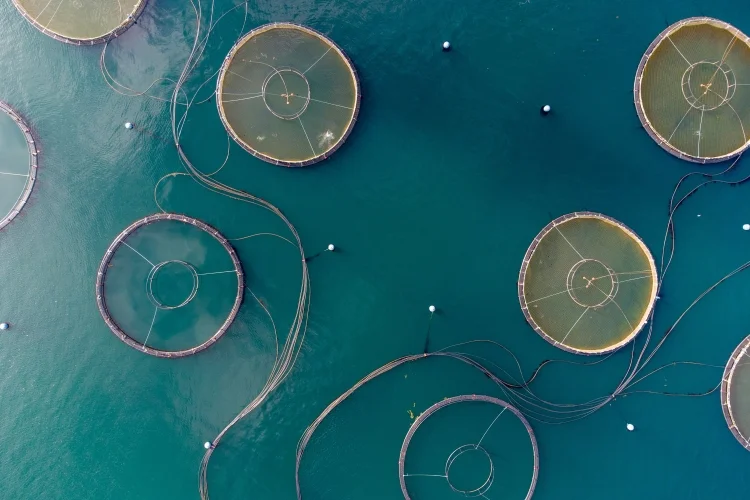by Zella
Fish farming is the cultivation of fish in artificial ponds or tasks, that are then sold generally for consumption. The industry is highly lucrative, relatively easy to set up and maintain, and reduces the environmental damage of overfishing. When setting up a fish farming business, there are certain steps that should be taken in the process.

Contents
Firstly, it is important to consider which species of fish is best to farm. It is crucial to conduct research on market demand, financial costs, and technical compatibility. Fish farming primarily serves the purpose of providing fish for consumption, and popular species for this purpose include carp, catfish, salmon, and bass, like the species featured in the Big Bass Bonanza slot game, information about casinos offering this game can be found on sites like Platinplay. However, farms are also used to supply fish to aquariums. Researching the local market is necessary to identify potential clients and understand which species are in demand. Before beginning, it is essential to lay out a business plan that assesses costs, production methods, operational logistics, and a detailed timeline. Depending on the farm's size, this project's finances will vary, and it might be required to look for potential funding sources such as private investors, government grants, or bank loans.
After research and planning, the next step is to evaluate the location of the farm. Land-based fish farming occurs in artificial ponds or tanks near a body of water such as a spring, river, or lake as its source. It is a priority to access the water quality to avoid pollution, toxins, and disease. The ideal temperature should be around 20 - 30 degrees. The soil must also be tested to ensure that it can hold the water. A thorough evaluation of the surrounding environment is vital. Locations that are at risk of flooding and high rainfall should be avoided. Nearby vegetation should be cleared that might damage the site, the area should also be fenced off to prevent predatory animals and theft. In terms of design, factors to research and consider include depth, shape, and drainage systems.
Fish farming involves a lot of essential equipment when embarking on a project, either big or small. A pump is needed to source the fresh water and maintain the water levels, while a drainage system is used to stop flooding and remove any waste. Filtration systems sift out this waste and maintain water quality, but there are also specific water quality monitors to ensure this. Aeration devices help to provide the flow of oxygen to the fish. Bigger farms might benefit from an automatic feeding system. It is important to research extensively to find a supplier with a good reputation for selling high-quality fingerlings. This is more likely to guarantee the survival of the fish. For harvesting the cultivated fish, nets, buckets, and transport barrels are required.
Before introducing the fish, the pond or tank must be an optimally prepared habitat to ensure the proper cultivation of the fish. After this, the fish may be placed in the water but still remain in their bags or containers so that they can acclimatise to the water temperature without going into shock. Water quality should be continually monitored ensuring the ideal temperature, PH, oxygen levels, and hardness. The feed should be high-quality and provide balanced nutrients whether through automatic feeders or handfeeding. Any environmental stressors, such as overcrowding, can cause many problems for the fish. Diseases are a major issue for fish farming; therefore, it is essential to monitor the fish, water quality, equipment, and environment. Infected fish may be isolated, if the problem is small, and treatment is possible through medications or vaccines.
The final step is harvesting, and then selling the fish. The timeline of this is based upon tracking the size of the fish to its optimal weight. Depending on preference and the farm's magnitude, the pond can either be drained or nets can be used to catch the fish. The produce should then be cleaned before it can be properly processed and packaged so that it can remain fresh. When selling the fish, the target market should be based around the lucrative companies in the area whether that is for local businesses or bigger wholesalers. Starting small locally can help to build the presence and reputation of the farm, so that bigger clients can be attracted.
It might seem daunting to set up a fish farming business but, as shown, it can be broken down into manageable and achievable steps. If you are interested in this venture, begin researching by looking into the industry and market to start your journey.

About Zella
Zella is a writer and filmmaker known for her work in the field of media arts. She hails from Tohatchi, New Mexico, and has achieved notable accomplishments throughout her career. Zella holds a bachelor's degree in Media Arts from the University of New Mexico and an MFA (Master of Fine Arts) in Creative Writing from the Institute of American Indian Arts.
 |
 |
 |
 |
Time for FREE Giveaways, and Free Gifts luck now
Reveal all secrets with adblock move. Hit a button below to show all
 |
 |
 |
 |